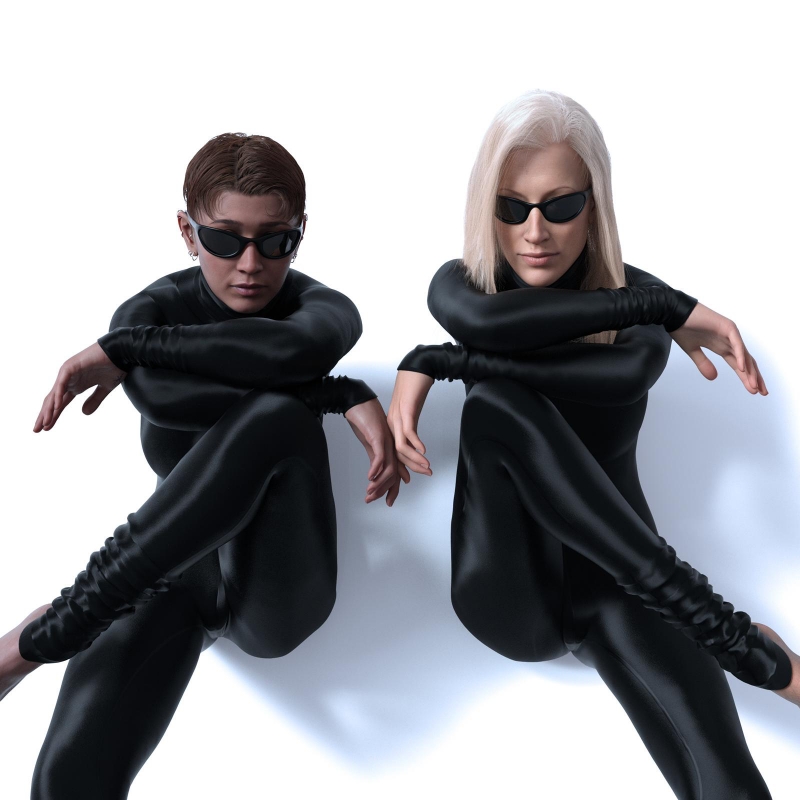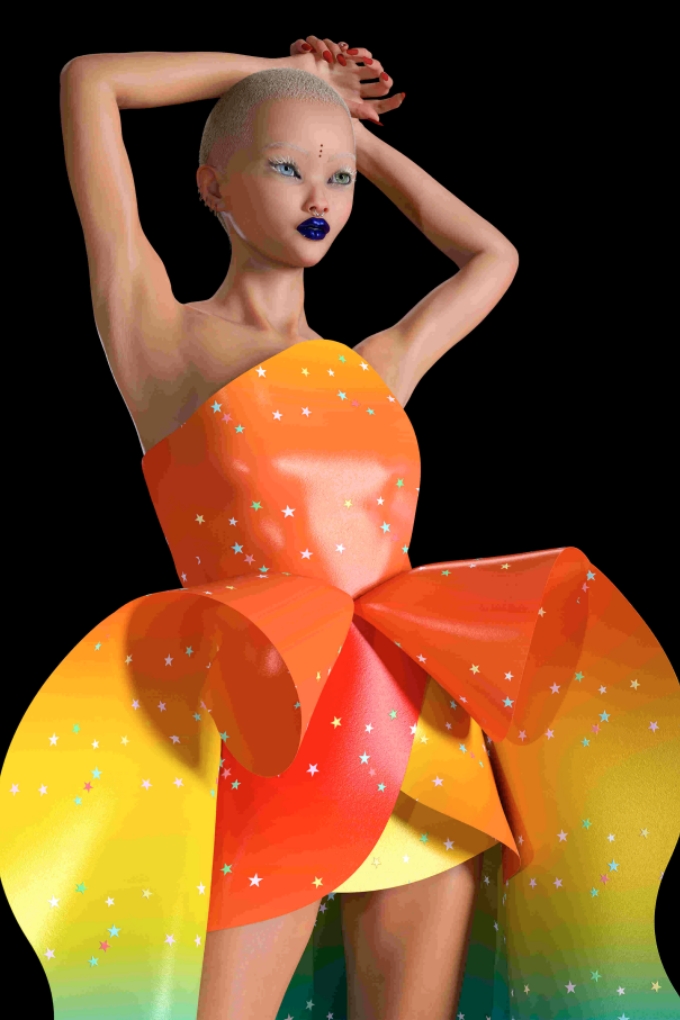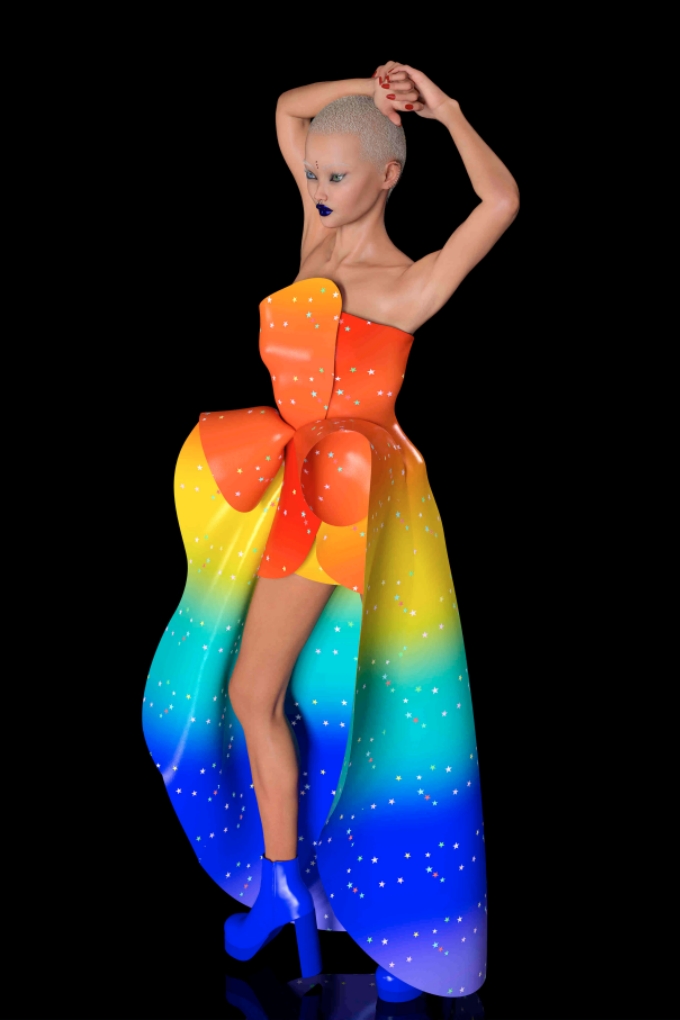401 minutes—almost a third of a whole day. That’s the global daily average of time each of us spent on the internet in 2022, according to statistics watchdog DataReportal. Make no mistake, even in purely statistical terms, to deny the place of prominence of the digital space in our acceleratingly technologised present is akin to waving a sword at a tidal wave.
Then, there’s the metaverse. A literal new world untethered from the limits of the IRL one. Where the digital big bang promises untold wonders, and every aspect of life can be reconfigured into dazzlingly new totalities, new realities, new revelations. In and for fashion, the possibilities are endless. “Digital fashion gives creative freedom. Now people in different parts of the world can freely express themselves in a digital realm through the language of fashion”, says Leila Ismailova, co-founder of Web3 creative fashion space Artisant, nodding at the metaverse being the fashion’s next and most inclusive canvas. At the recently concluded Metaverse Fashion Week (MVFW) 2023, presented by Decentraland, Spatial.io and OVER, the merits of her insight were resoundingly apparent.


As champions of fashion’s next frontier, Vogue Singapore carried a torch for the digital embrace of fashion’s latest incarnation, via a slew of initiatives and activations, including the MVFW x Vogue Singapore Digital Competition, in which an open call was issued to designers to submit their interpretations and renditions of the theme ‘Love in the Metaverse’. Upon assessment by a VIP jury composed of industry professionals, including Ismailova, Leanne Elliot Young and Cat Taylor, co-Founders of Institute of Digital Fashion and Vogue Singapore, as well as votes from the public, a winner was selected: Lorena Bello.
“The winning design champions key design elements that showcase inclusivity; designing for non-binary bodies and celebrating queerness in the metaverse”, is Taylor’s appraisal of Bello’s winning design, ‘Metalove’, as well as an affirmation of the embracing essence of fashion’s new world.
In the following interview, Bello takes us through her design philosophy and how the metaverse is poised to revolutionise fashion, design and human interaction.

Congrats on Metalove, Lorena! How does it feel to win?
It’s unbelievable! Just being in the top three was huge for me. It was a dream come true. If you’re a designer, you aspire to be featured in Vogue. I feel over the moon, like I’m somewhere in the universe, in a house on Mars, perhaps!
Before we get into your collection, let’s talk about your story. What made you want to design clothes in the metaverse?
I don’t know if it’s something that happened by chance, or naturally. My path in 3D design and digital fashion began during COVID-19. I used to work in traditional fashion and I had started working with 3D, just because I was fascinated by all its possibilities. But this was before the metaverse exploded.
My first opportunity to work in what we now call the metaverse came when DigitalX contacted me to create some NFTs and digital assets. I have a duality in the sense that I work for myself as a brand, and I work as a freelance designer, collaborating with brands over different projects.
When I created my first asset in 3D, I felt that though I didn’t own it physically, it was real for me. We’re at a very early stage of what we can do with all this technology. I’m so excited for what’s to come.
From your standpoint as a designer, why is the metaverse the next frontier of fashion?
The metaverse is the game-changer. It brings fashion to a totally new world and a new economy. Fashion is crossing into a new frontier where it’s not just about what you wear. It’s becoming about how that self-expression translates into a new world. This gives a fashion customers a new experience as well as a new market. It’s giving fashion a new life. Brands are creating new relationships and new forms of interaction with their customers. There are more lines of business than before. Back then, you could only sell in-store or online. Now, you can even sell for gaming.





What was your philosophy behind ‘Metalove’?
I wanted to create something playful and colourful and that was also an expression of celebration, because love is a celebratory feeling. I think that there’s nothing more important than love in our real lives. In the metaverse, you can be whatever you want to be. You are not limited by physical boundaries. Love is a light that guides us. So, it’s only right that we convey love with the full spectrum of expression in the metaverse.
And as far as being an agent of connectivity and bringing people together goes, how do you think the metaverse fares?
People who struggle more to communicate in real life, who are more shy and have trouble expressing themselves—now they have the metaverse. They don’t have to change who they are to express themselves. Anyone can be whatever they want, whenever they want.
It’s my hope that avatars advance to a point where they retain the facial expressions of the people behind them.
Lastly, as much as humanity’s strides into the digital space are advancing, what keeps you inspired as a creator?
I’m very inspired by what I feel. I’m constantly evolving. The Lorena that is designing today is not the same person as the one designing last year. We’re changing every day—it’s natural. So, I want to keep evolving but to be true to myself. Even if people don’t like what I make, I must like it. I must be true to myself.





